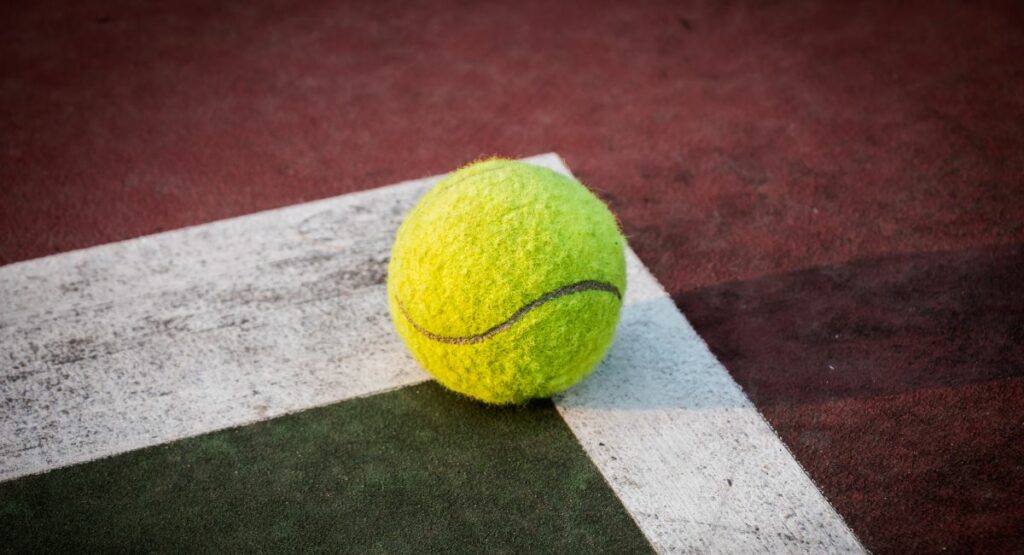
Ever wondered what “a.d.” means in tennis? You’re not alone! It’s a fundamental part of scoring in tennis, and in this article, we’ll break it down for you while discussing situations that resonate with most tennis enthusiasts.
The abbreviation, ‘ad,’ stands for advantage in tennis. When this happens, a point is scored after a deuce. If the serving side scores, it is Ad-in. If the receiving side scores, it is Ad-out. You will mainly hear this phrase used at the point of a deuce and afterward.
Still curious about advantages in tennis? We’ve got plenty more to share!
Table of Content
Breaking Down The Tennis Scoring System
What Does “Ad-In” And “Ad-Out” Mean In Tennis?
Alternative Scoring System (No-ad Scoring)
Origins Of Advantage Scoring
Final Thoughts
Breaking Down The Tennis Scoring System

Before stepping onto a tennis court, it’s crucial to understand how scoring is kept. Here is what every player should know:
Tennis-Point System
- 0 points= Love
- 1 point = 15
- 2 points= 30
- 3 points= 40
- Tied score= All
- 40-40 = Deuce
- Server wins deuce point = Ad-In
- Receiver wins deuce point = Ad-Out
Deciding The Winner
To win a game in tennis, the player must win at least four points. You would be called the winner if you are up 40-30, 40-15, or 40-love and win one more point. Furthermore, if the score is tied in a game or set, you use the term “all” when announcing the score.
If you and your opponent have both won two points in the game, you’d use the phrase “30-all.” These are all from the official USTA guidelines, so it’s a good idea to get acquainted with them. After all, even leisurely tennis players should be following USTA rules and scoring.
What Does “Ad-In” And “Ad-Out” Mean In Tennis?
The phrases “Ad-In” or “Ad-Out” refer to the server or opponent winning the deuce point. For example, when the server scores the deuce point, that’s an Ad-In.
In contrast, you’d call the Ad-Out if the opponent (person not serving) wins the deuce point. If the team with the advantage (Ad-In or Ad-Out) wins another point, they win the game, or it goes back to deuce.
This is when many newer tennis players may get confused, but deuces will initiate the advantage score depending on where the point goes.
Deuces can also affect how long a tennis match runs; not everyone will be the same.
Alternative Scoring System (No-ad Scoring)

The alternative scoring system in tennis refers to the newer way of scoring, minus the advantage or ad point. You may even hear this way of scoring called “no-ad scoring,” essentially eliminating that call from the game.
This scoring method is used at exhibition matches, created by James Van Alen to shorten playing time. The idea is to eliminate the requirement that a player win by two points after a tie.
Instead, you’d win after a single point following a deuce. This is a way to decrease game time, especially during professional matches. Also, when this style of play/scoring happens, at deuce, the receiver then chooses the side of the court they desire to return the serve.
Origins Of Advantage Scoring

The origins of using ad and advantage in tennis scorekeeping date back hundreds of years. It’s widely believed that the roots of the 15, 30, and 40 scores are medieval French, with the “ad” put in place because players did not want to decide games by a single point.
Additionally, it is sometimes believed that clock faces were used to keep score on the court, explaining the 15, 30, and 40 score systems. When the hand moved to 60, the game was over.
The deuce was introduced to keep the single point from winning the game, forcing a player to win two points.
Final Thoughts
This article covered what an “ad” or advantage symbolizes in tennis scorekeeping and how it relates to deuce. Whenever players enter a deuce, they must score two points to win the game, taking either the Ad-In or Ad-Out.
Our post on all tennis terms is also worth checking out.
